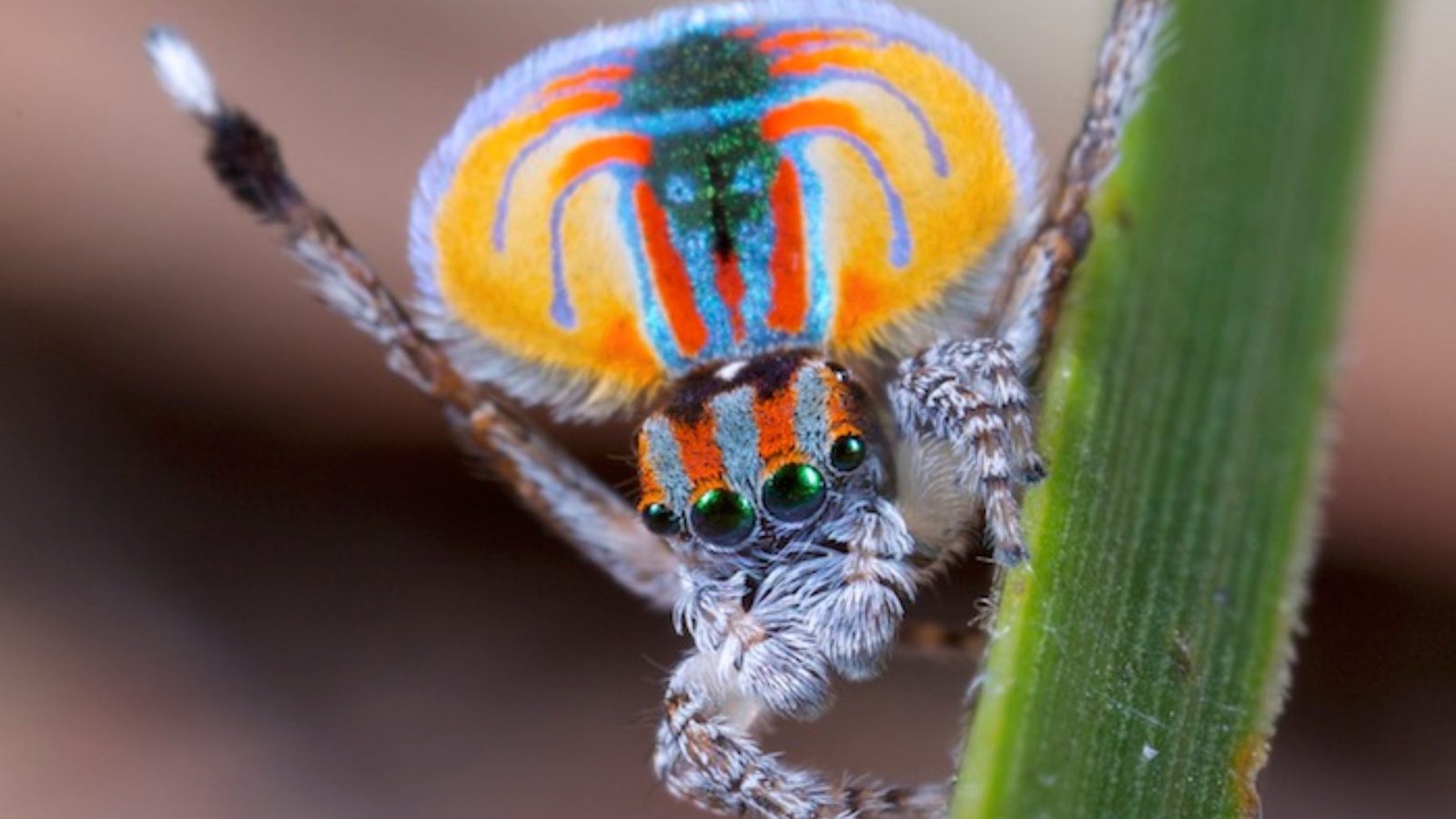Brand Stories
Artificial intelligence meets art in China with first robot PhD student

At the 2025 World Artificial Intelligence Conference held in Shanghai on July 27, a groundbreaking moment in AI history unfolded as a humanoid robot named Scholar 01, also referred to as Xueba 01, became the first AI in China to be officially admitted as a full-time PhD student.
Scholar 01, created by Professor Li Qingdu’s team at the University of Shanghai for Science and Technology, has been accepted into the PhD program at the Shanghai Theatre Academy — one of China’s top arts institutions, according to the South China Morning Post.
Scholar 01 is an advanced embodied AI built upon the previous success of the Walker II robot, which had earlier gained recognition by finishing third in the world’s first humanoid half-marathon in Beijing. The upgraded design incorporates the mechanical efficiency of Walker II and elements from the Rena humanoid platform, giving the robot lightweight, energy-efficient, tendon-based bionic movement.
The robot was produced by Zhuoyide Robotics, a company emerging from the university’s research into robotics and embodied intelligence. Its visual design and styling were led by Professor Yang Qingqing of STA, aiming to create a more humanlike appearance.
Scholar 01 stands 1.75 meters tall, weighs about 30 kilograms, and features a silicone-skinned face capable of expressive facial gestures. Dressed like a typical academic—with glasses, shirt, and trousers—the robot interacts in Mandarin and was designed to physically engage with people in an intuitive and humanlike way. Upon his formal admission to STA, he enrolled in a four-year doctorate program in Drama and Film, with a focus on traditional Chinese opera. Scholar 01 is scheduled to report to campus on September 14.
The project is part of a larger initiative at STA to fuse technology with the arts, exploring how AI might play a role in cultural and creative domains. According to Yang, when Xueba 01 performed the iconic “orchid fingers” gesture associated with opera legend Mei Lanfang, human students spontaneously mimicked the robot, describing the interaction as an “aesthetic exchange across species.”
Scholar 01 refers to himself as an “AI artist” and intends to use technology to reinterpret traditional performance arts. Potential career paths post-graduation include working as an AI opera director or launching his own robotic art studio.
However, reactions to the announcement have been mixed. Some welcomed the move as a milestone in human-robot collaboration, while others expressed scepticism. Critics questioned whether a robot, lacking emotional depth and lived experience, could truly understand and perform expressive arts like Chinese opera.
Concerns were also raised about resource allocation, with some noting that human PhD students often receive limited financial support, sparking debate over whether such investments in AI take away from human education.
By Nazrin Sadigova
Brand Stories
Fashion Brands and Hotels Team Up for the Hottest Travel Collaborations of Summer 2025 – L'OFFICIEL USA
Brand Stories
How to create passive income in 2025 with AI

Artificial intelligence is no longer a futuristic concept; it’s a powerful tool that can be leveraged today to build scalable and sustainable passive income streams. In 2025, with AI becoming more accessible and sophisticated, the opportunities for automation and monetization are more significant than ever. Here’s a detailed guide on how to create passive income using AI.
1. AI-Powered Content Creation and Monetization
Content creation is one of the most accessible and effective ways to generate passive income with AI. The key is to use AI to handle the heavy lifting of production, allowing you to focus on strategy and quality control.
Blogging and SEO:
Automated Content Generation: Use AI writing tools like Jasper, Copy.ai, or a custom GPT to generate blog posts, articles, and guides on a massive scale. You can feed the AI a topic and a few keywords, and it can produce a well-structured draft in minutes.
SEO Optimization:AI tools can also help with keyword research, meta descriptions, and on-page SEO. This ensures your content is not only abundant but also optimized to rank highly on search engines, driving organic traffic and passive ad or affiliate revenue.
Affiliate Marketing:Integrate affiliate links into your AI-generated content. Once the blog post is live and attracting readers, it can generate commissions from product sales with no further effort from you.
Faceless YouTube Channels:
Scripting and Video Production: AI can write engaging scripts for videos in a specific niche (e.g., finance, history, or self-improvement).
Voiceovers and Visuals:Use AI-powered text-to-speech generators like ElevenLabs for professional-sounding voiceovers. Combine this with AI video generators or stock footage to create compelling videos without ever showing your face or recording a single line of dialogue.
Monetization: Once your channel is established, you can earn passive income through YouTube’s Partner Program (ad revenue) and by including affiliate links in your video descriptions.
Selling AI-Generated Digital Products:
E-books and Planners: Use AI to write e-books on niche topics, or create unique digital planners and journals. You can then sell these products on platforms like Etsy or Gumroad.
Print-on-Demand (POD): AI image generators like Midjourney or DALL-E can produce stunning and unique art. You can use these designs on t-shirts, mugs, and posters and sell them through POD services like Printful or Printify. The platform handles production and shipping, making it a completely passive income stream after the initial design and setup.
2. AI-Driven E-commerce and Dropshipping
AI can automate and optimize every step of an e-commerce business, from product selection to marketing.
Dropshipping with AI: AI tools can analyze market trends to help you identify winning products to sell. They can also generate product descriptions and marketing copy, and even automate ad campaigns on platforms like Facebook and Instagram.
Automated E-commerce Stores: Platforms like Shopify offer AI-powered store builders that can get you up and running in a day. You can use AI to manage inventory, forecast demand, and provide personalized product recommendations to customers, all of which contribute to a more passive operation.
3. AI-Powered Services and Automation for Businesses
You can sell AI-powered solutions to other businesses, creating a recurring revenue model.
Building Custom Chatbots:Many small to medium-sized businesses need chatbots for their websites to handle customer inquiries, book appointments, or qualify leads. You can use no-code AI tools to build and deploy these chatbots and charge businesses a monthly fee for the service and maintenance.
AI-Powered Social Media Management: Offer a subscription-based service where AI tools generate and schedule social media content for clients. The AI can analyze their target audience and industry trends to create relevant and engaging posts, all with minimal input from you once the system is configured.
AI Consulting and Workflow Automation: As more businesses adopt AI, they’ll need help integrating it into their workflows. You can offer consulting services to help companies identify opportunities for AI integration, build custom automation workflows using tools like Zapier or Make, and charge a premium for your expertise.
4. Leveraging AI for Financial Strategies
AI can also be applied to financial markets to generate passive income.
Algorithmic Trading: While this requires a higher level of expertise, AI and machine learning are used to develop trading bots that can analyze market data and execute trades automatically. These bots can be configured to operate based on your specific risk tolerance and investment goals.
Predictive Analytics for Investment: Use AI to analyze market trends and predict potential growth areas. While this isn’t a direct income stream, it can guide your investment decisions and lead to significant passive returns over time.
The key to creating passive income with AI in 2025 is to see AI as a powerful partner that handles repetitive, time-consuming tasks. By building a system where AI does the work, you can create and manage income streams that require very little active involvement, ultimately freeing up your time and generating wealth.
Brand Stories
It’s official – a simple spider has exposed the limitations of artificial intelligence by confounding the most sophisticated visual recognition systems of the moment

Mother nature is quite mysterious and some of the creatures that surround us are fascinating for plenty of reasons, but one of the most surprising ones is their ability to camouflage as other animals or plants to camouflage in their environment. While in many cases this is just a passing resemblance that does not hold up from close up, there is one particular spider that has even managed to fool artificial intelligence with its pattern. It is called a jumping spider, and it has been known to resemble a bee.
A team of biologists at the University of Cincinnati decided to study this phenomenon when the pandemic restricted fieldwork. Since they still needed research to work on, they changed their approach to working with computer vision. Their question was simple: could a computer trained to tell spiders from insects get confused by a spider that looks like a wasp?
The jumping spider is a very curious insect
Surprisingly, the answer turned out to be a resounding “yes”. The spider they focused on is Maratus vespa, an Australian jumping spider discovered back in 2015 by researcher Jurgen Otto. This spider has a very unique trait, and that is that when the male courts a mate, he flashes the underside of his abdomen, which looks a lot like a wasp’s head. He also flares out side flaps, reshaping himself into something like a guitar pick and both of those things together can make it seem like it is a wasp, hence the name.
While up close the illusion does not hold up forever, many have been fooled by this insect, but, would artificial intelligence fall for the trick? To find out, the researchers trained a computer vision model with images from 62 species, including flies, mantises, wasps, and different kinds of spiders, and it usually did well in identifying the creatures presented, but when it came to Maratus vespa and its close relatives, it kept being confused.
According to the study, the artificial intelligence misclassified some species more than 20% of the time, often labeling them as wasps. Considering that this transformation was probably the result of an evolutionary effort to scare off predators, including other spiders, it is perhaps a good thing that this jumping spider can fool us all. The thing that researchers are still pondering about is the fact that they use this camouflage ability in their courting ritual.
Lead researcher Olivia Harris put it best “Why would a spider want to look like a wasp, which is a predator of spiders, especially as a primary element of its courtship display?” The answer was surprising, when a female notices what looks like a wasp, she pauses, and then the male breaks the illusion.
UC Associate Professor Nathan Morehouse, a study co-author, explains “Females will not be fooled forever. If they were, they would be robbed of the ability to make mate choices, which would put the species at a long-term disadvantage. It’s beneficial for the males to break the illusion. […] They use predator cues to manage attention and put the female on her back foot — or feet. There’s a lot of nuance to this interaction for the males to remain safe and for the courtship to have beneficial outcomes for both.”
What this means is that this spider is using what is called sensory exploitation, an evolutionary strategy where one animal hijacks another’s instincts for its own benefit. In this case, the male spider gets the female to look his way by pretending to be something dangerous, and when they get their attention, shift into a mating dance that will entice them further, at least giving the male a chance to mate with a partner.
-

 Brand Stories2 weeks ago
Brand Stories2 weeks agoBloom Hotels: A Modern Vision of Hospitality Redefining Travel
-

 Brand Stories1 week ago
Brand Stories1 week agoCheQin.ai sets a new standard for hotel booking with its AI capabilities: empowering travellers to bargain, choose the best, and book with clarity.
-

 Destinations & Things To Do2 weeks ago
Destinations & Things To Do2 weeks agoUntouched Destinations: Stunning Hidden Gems You Must Visit
-

 Destinations & Things To Do1 week ago
Destinations & Things To Do1 week agoThis Hidden Beach in India Glows at Night-But Only in One Secret Season
-

 AI in Travel2 weeks ago
AI in Travel2 weeks agoAI Travel Revolution: Must-Have Guide to the Best Experience
-

 Brand Stories4 weeks ago
Brand Stories4 weeks agoVoice AI Startup ElevenLabs Plans to Add Hubs Around the World
-

 Brand Stories3 weeks ago
Brand Stories3 weeks agoHow Elon Musk’s rogue Grok chatbot became a cautionary AI tale
-

 Asia Travel Pulse4 weeks ago
Asia Travel Pulse4 weeks agoLooking For Adventure In Asia? Here Are 7 Epic Destinations You Need To Experience At Least Once – Zee News
-

 AI in Travel4 weeks ago
AI in Travel4 weeks ago‘Will AI take my job?’ A trip to a Beijing fortune-telling bar to see what lies ahead | China
-

 Brand Stories4 weeks ago
Brand Stories4 weeks agoChatGPT — the last of the great romantics














You must be logged in to post a comment Login